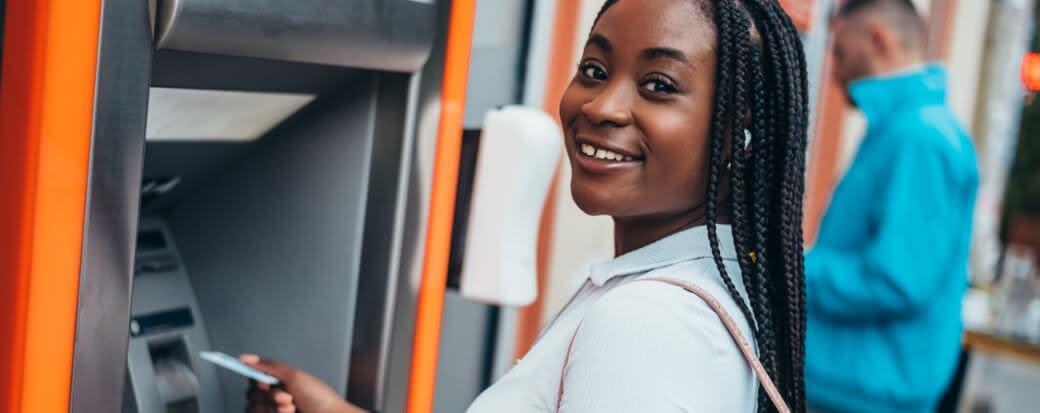Checking Accounts vs Debit Cards: How They Compare

Share this article:
Editor’s note: Lantern by SoFi seeks to provide content that is objective, independent, and accurate. Writers are separate from our business operation and do not receive direct compensation from advertisers or network providers. Read more about our Editorial Guidelines and How We Make Money.
What Is a Debit Card?
How Debit Cards Work
Pros and Cons of Debit Cards
Pros
Convenience: Debit cards are generally accepted by most retailers and allow you to make purchases without having to carry around cash. When you do need cash, you can typically use your debit card at a wide network of ATMs. No monthly fees: There are typically no monthly or annual fees to own a debit card. Spending limitations: Unlike with credit cards, you generally can’t spend money you don’t have in your account with a debit card. This can help prevent overspending and running up expensive debt.
Cons
Security: Consumer protections against fraud generally aren’t as robust for debit cards as they are for credit cards. Overdraft and ATM fees: While debit cards may not have monthly or annual fees, you can get hit with other fees, such as overdraft fees and out-of-network ATM fees. Not ideal for big purchases: While a debit card can be great for everyday spending, such as buying groceries or grabbing your morning coffee, using it for a major purchase, like a new couch, could deplete your checking account.
Prepaid Debit Card vs. Debit Card
What Are Checking Accounts?
How Checking Accounts Work
Pros and Cons of Checking Accounts
Pros
Easy access: Checking accounts let you access your money in a number of ways. You can typically spend or withdraw money by visiting a bank, using your debit card at an ATM, writing a check, or making an online transfer. Security: Money in a checking account is secure, since it’s usually federally insured in the event of bank failure. Direct deposit: You can usually set up direct deposit into your checking account right from your employer. You don’t have to wait for it to arrive in the mail or remember to deposit it into your account. It all happens automatically. Also, the money is usually available to spend immediately.
Cons
Minimal interest: Checking accounts typically pay little to no interest. Even “interest checking” accounts generally offer a very low annual percentage yield (APY). Fees: Some checking accounts have monthly fees, as well as other fees, that can eat into your balance. Daily limits: Because financial institutions only keep a fraction of their bank deposits on hand in cash, banks typically impose daily limits on how much money you can withdraw from your checking accounts through ATMs, as well as how much you can spend using your debit card. Limits will vary depending on the bank.
Debit Cards vs Checking Accounts Compared
Similarities
Both checking accounts and debit cards allow you to manage your money and make transactions, including withdrawals and point-of-sale purchases (but you need a debit card to make purchases from your checking account). Balances are typically federally insured. Both have security features, such as a PIN for your debit card or data encryption when accessing your checking account online.
Differences
A checking account is a way to store your money, while a debit card is a way to access it. Checking accounts let you write checks; debit cards don’t. You can receive direct deposits with a checking account, but not with a debit card (though you can often set up direct deposits with prepaid cards). Some checking accounts have monthly fees, but debit cards usually don’t.
Paying Bills With a Checking Account vs a Debit Card
Relationship Between Debit Cards and Checking Accounts
Can You Have a Debit Card Without a Checking Account?
Can You Withdraw From a Checking Account Without a Debit Card?
Can You Have Multiple Debit Cards for One Checking Account?
The Takeaway
Frequently Asked Questions
Photo credit: iStock/zamrznutitonovi
LNTBNK-Q125-005
About the Author
Bob Haegele is a personal finance writer dedicated to helping others improve their finances, build wealth, and establish a stable, long-term financial plan. His expertise extends to topics such as investing, student loans, and credit cards, and his work has appeared on outlets such as Business Insider, Bankrate, GOBankingRates, and CreditCards.com.
Share this article: